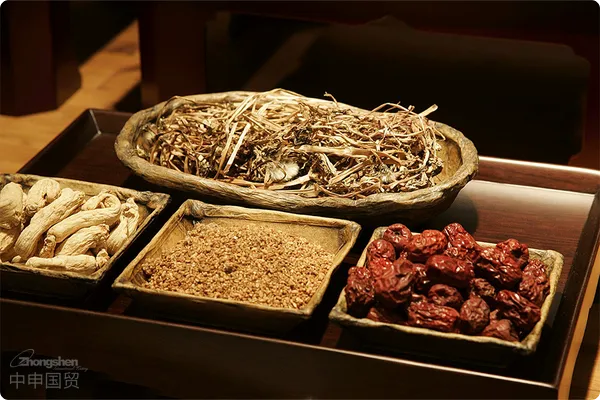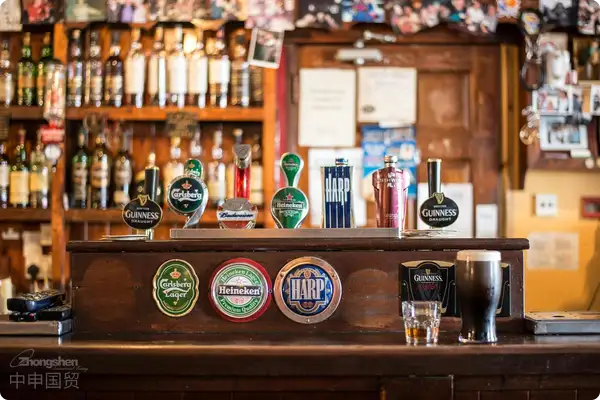- Shanghai Zhongshen International Trade Co., Ltd. - Two decades of trade agency expertise.
- Service Hotline: 139 1787 2118
In the global market, traditional Chinese medicines, as a vital component of traditional medicine, are seeing increasing import demand. However, their import involves complex customs procedures and strict regulatory requirements. How to ensure smooth customs clearance for traditional Chinese medicines? This article will provide a detailed breakdown of key steps and required documents for importing traditional Chinese medicines, helping you better understand and navigate this process.

I. Quarantine Access and Supervision
1.1 Quarantine Access System
The General Administration of Customs implements a strict quarantine access system for imported traditional Chinese medicines. This system includes the following key steps:
(1) Risk Analysis:Assess the potential risks of traditional Chinese medicines and identify key varieties requiring enhanced supervision.
(2) Regulatory System Evaluation:Review the quarantine system of the exporting country to ensure it meets Chinas standards.
(3) Determination of Quarantine Requirements:Establish specific quarantine requirements based on risk analysis results.
(4) Overseas Enterprise Registration:Specific varieties of traditional Chinese medicines must be registered with the General Administration of Customs, with a validity period of 4 years, subject to dynamic adjustments.
1.2 Overseas Enterprise Registration
To ensure the quality and safety of traditional Chinese medicines, overseas production enterprises must register with the General Administration of Customs. The registration is valid for 4 years, with updates required for any changes during this period. This step aims to ensure the legality and traceability of imported traditional Chinese medicines.
II. Pre-Import Preparation
2.1 Quarantine Approval
Prior to signing a trade contract, the importer must obtain the Entry Animal and Plant Quarantine Permit. This permit serves as crucial documentation to ensure that imported traditional Chinese medicinal materials comply with Chinas quarantine requirements.
2.2 Document Preparation
The importer must prepare the following complete set of documents:
(1) Contract:Clearly specify the information of both trading parties, product specifications, quantity, price, etc.
(2) Invoice:Used to verify the value of the goods.
(3) Packing List:Detail the packaging information of the goods.
(4) Bill of Lading:Used for cargo pickup.
III.Import Customs DeclarationProcess
3.1 Qualification Confirmation
First, the importing company must confirm it possesses the following qualifications:
(1) import and exportRights:Permits the company to engage in international trade activities.
(2) Right to Sell Pharmaceuticals:Ensure the company is qualified to sell imported traditional Chinese medicinal materials.
3.2 Complete Documentation
Ensure all necessary documents are prepared without errors, including the contract, invoice, packing list, bill of lading, etc. Missing any document may cause delays during customs clearance.
3.3 Drug Clearance Certificate
Before the goods arrive at the port, the importer must apply for a Drug Clearance Certificate from the Drug Administration. This is a challenging step in the import process, as the certificate is valid for 15 days, and customs procedures must be completed within this period.
3.4 Bill Exchange and Inspection
After the goods arrive at the port, the importer must exchange the bill of lading with the shipping company and undergo inspection. The inspection includes a preliminary check of the goods to ensure they meet import requirements.
3.5 Customs Declaration and Tax Payment
Submit customs declaration documents, await customs review, and pay the corresponding taxes. The tax amount depends on the type and value of the goods.
3.6 Release and Distribution
After customs clearance is completed, the goods will be released by customs. The importer may choose to pick up the goods themselves or delegate a logistics company for distribution.
IV. Precautions
4.1 Purpose Declaration
Clearly declare whether the goods are for medicinal or edible use. Traditional Chinese medicinal materials for different purposes must comply with different catalogs or regulations. For example, medicinal materials must be listed in the Pharmacopoeia of the Peoples Republic of China, while edible materials must comply with the dual-use as food and medicine list.
4.2 Compliance with Standards
Imported traditional Chinese medicinal materials must meet the corresponding quality standards. For example, medicinal materials must comply with the standards of the Pharmacopoeia of the Peoples Republic of China, while edible materials must meet food safety standards.
4.3 Export Country Requirements
The exporting country must comply with the quarantine agreements, standards, or contractual requirements of the importing country (China). For example, exporting enterprises must be registered with customs and meet Chinas quarantine requirements.
4.4 Registration
If required by the importing country, exporting enterprises must register with customs. This step aims to ensure the legality and traceability of the source of imported Chinese medicinal materials.
4.5 Declaration Materials
Importers must submit materials including contracts, invoices, certificates of compliance, and written declarations to ensure these materials meet the requirements of the importing country.
V. Customs Clearance Procedures
5.1 Label Review
Imported Chinese medicinal materials must comply with Chinese labeling requirements. Labels must be reviewed and approved before import. Label content should include product name, specifications, ingredients, production date, shelf life, and other information.
5.2 Approval and Qualifications
Specific Chinese medicinal materials may require import approval. Importers without qualifications can seek agency services to ensure a smooth import process.
5.3 Inspection and Quarantine
Upon arrival at the port, goods must undergo inspection and quarantine. Customs will issue inspection and quarantine certificates (e.g., health certificates) upon approval. This process includes checks on the appearance, composition, and microorganisms of the goods to ensure compliance with import standards.
Conclusion
The customs clearance process for importing Chinese medicinal materials is complex, involving multiple steps and strict supervision. From quarantine access to final release, each step must strictly comply with relevant regulations to ensure the compliance of all documents and procedures. We hope this article provides practical reference to help enterprises succeed in the import process of Chinese medicinal materials. If you have further questions or need professionalImport Representationservices,ZhongShen International Tradewe are always here to support you.
Related Recommendations
Category case
Contact Us
Email: service@sh-zhongshen.com
Related Recommendations
Contact via WeChat

? 2025. All Rights Reserved. Shanghai ICP No. 2023007705-2  PSB Record: Shanghai No.31011502009912
PSB Record: Shanghai No.31011502009912









